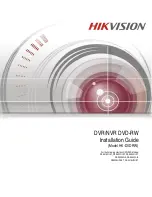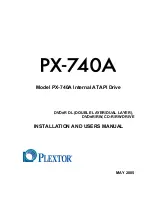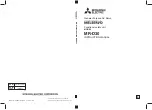
4
5
Rev:5.0
6/08/2010
Rev:5.0
6/08/2010
MSST5/10-S UserManual
MSST5/10-S UserManual
2 Getting Started
To use drive models MSST5-S or MSST10-S, the following items are needed:
▪ A power supply (24-48VDC for MSST5-S and 24-80VDC for MSST10-S)
▪ A compatible step motor
▪ A small flat blade screwdriver for tightening the connectors - a MOONS’ screwdriver suitable
for this purpose is included with the drive.
▪ A PC with a 9-pin serial port running Windows 98, 2000, ME, XP or NT
▪ The ST Configurator software included the drive
▪ The communication cable included the drive
2.1 Installing Software
To become familiar with the MSST drive and Configurator Software before utilizing it in an applica-
tion, the following steps are recommended:
▪ Install the ST Configurator Software from the CD
▪ Launch the software by clicking Start…Programs…MOONS’…ST Configurator
▪ Connect the drive to the PC using the programming cable supplied
▪ Connect the drive to the DC power source (may be switched)
▪ Connect the drive to the motor
▪ Apply power to the drive
▪ Follow the instructions in the ST Configurator Software
2.2 Choosing a Power Supply
Voltage
A power supply with a voltage rating at least five times that of the motor is necessary for efficient
and silent switching. Higher speed needs will require even more voltage. However, the required
voltage will not exceed 48V for the MSST5-S or 80V for the MSST10-S.
If an unregulated power supply is used, it should not exceed 34V for the MSST5-S or 57V for the
MSST10-S due to the fact that unregulated supplies are rated at full load current. At lower load as
when the motor is not moving, the actual voltage can be as much as 1.4 times the rated voltage.
For smooth, quiet operation a lower voltage gives the best results.
Current
The maximum supply current required is the sum of the two phase currents. The requirements will
generally be less than that, depending on the motor type, voltage, speed and load conditions. This
is due to the switching amplifiers present in these drives which convert high voltage and low cur-
rent into lower voltage and higher current. As the power supply voltage exceeds the motor
voltage, less current is required from the power supply. A motor running from a 48 volt supply can






































